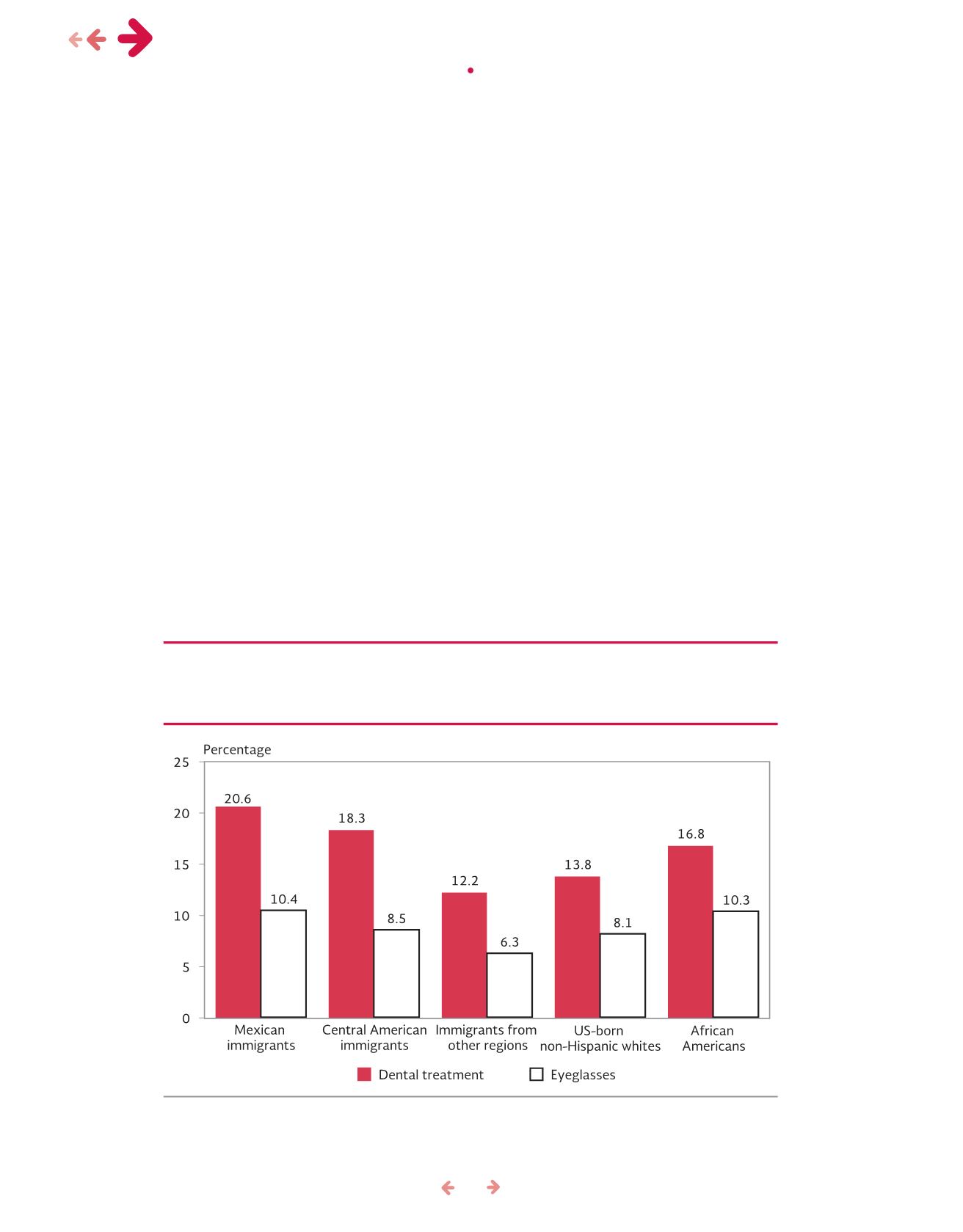
46
Theavailabledatashow thatone infiveMexican
adults did not receive dental care, even when it was
necessary, a higher figure than among other popula-
tion groups. Moreover, like their African American
counterparts, one in ten reported that they need eye-
glasses but didnot obtain them (Figure33).
Diabetes is an illness that significantly affects
the Mexican population, both in Mexico and the
United States, and needs to be prevented and con-
trolled over a person’s lifetime. However, bothMexi-
can and Central American immigrants are less likely
than those from other regions and non-Hispanic US-
born whites and African Americans to have glucose
tests in the past year (just over one in three, com-
pared with four out of ten respectively) (Figure 34).
Men are less likely than women to have this test
across all of the groups. However, the gender gap
among Mexican and Central American immigrants
is very pronounced, since very fewmen in these two
groups get tested (27% and28%, respectively).
Mexican immigrants are the group that has
an Human Immunodeficiency Virus (hiv) test least
frequently, with under 40% of 21 to 50 year-olds
doing so, while approximately half of Central Ameri-
cans and two out of three African Americans have
done so. In all of the groups, the proportion of
women having undergone an hiv test is higher than
that of men. Nonetheless the gender gap among
Mexicans (17 percentage points) is far above that of
other immigrant groups and the US-born population
(Figure35). These low ratesof screening, especially for
Mexican immigrantmen, areaconcernsince routinehiv
testing is recommendedby theCenter forDiseaseCon-
trol andPrevention (cdc, 2006).
Only 22% of Mexican immigrants and 32% of
Central Americans were aware of the Human Papil-
loma Virus Vaccine (hpv), which was recently in-
corporated into the set of sexual and reproductive
health services recommended for adolescents and
adults. This rate was significantly lower than among
Source: Migration Policy Bureau, SEGOB, based onU.S. StateHealthAccessDataAssistanceCenter,
National Health
InterviewSurvey
(NHIS), 2012-2013. IntegratedHealth InterviewSeries.Minneapolis: UniversityofMinnesota.
Figure33. Populationbetween18and64years in theUnitedStates that requireddental
treatment or eyeglasses in thepast 12months anddidnot obtain it, by regionor origin
andethnicityor race, 2012-2013
migration & health •
mexican immigrants in the us: a 10 year perspective


